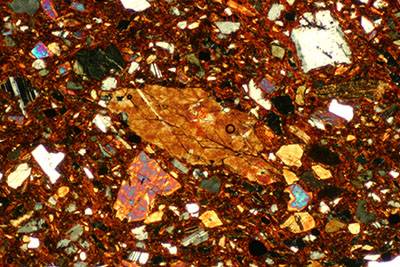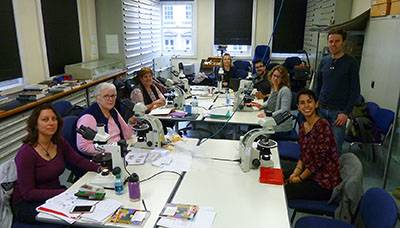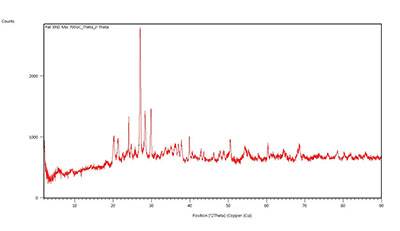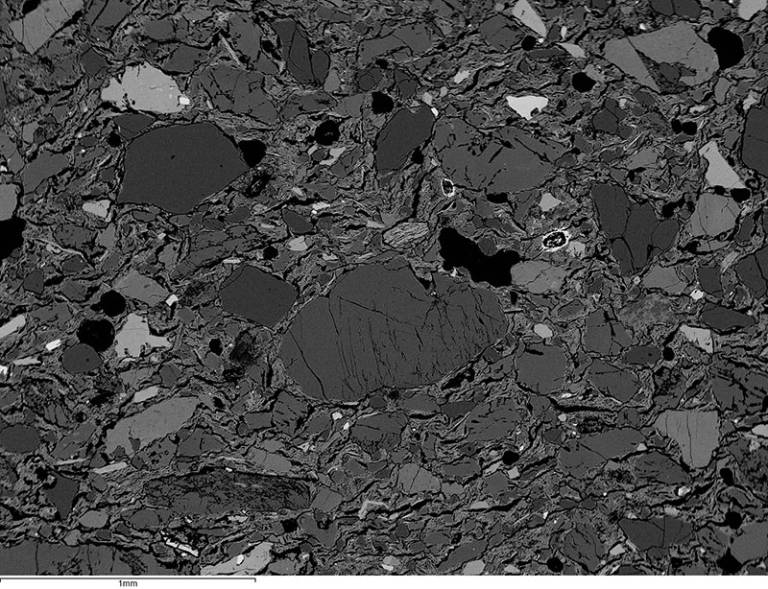Intensive Course on Thin Section Petrography, Geochemistry and Scanning Electron Microscopy of Archaeological Ceramics.
Course Description

The course provides in-depth training in the principles of thin section ceramic petrography and its role alongside instrumental geochemistry, X-ray diffraction and scanning electron microanalysis in the interpretation of pottery provenance and manufacturing technology.
It demonstrates, via published case studies and practical exercises on real archaeological assemblages, how scientific data on provenance and technology can be used to tackle archaeological questions such as trade and exchange, the organisation of craft production, tradition and identity.
The course introduces participants with an arts or science backgrounds to ancient ceramics and their use within archaeology, before covering the range of potential analytical tools that can be applied to their interpretation.

Participants will be trained on the versatile, affordable technique of thin section ceramic petrography, starting with the principles of polarising light microscopy, optical mineralogy, geological petrology, then moving on to cover the wide range of compositional signatures and features of ceramics under the and the microscope by examining reference material from across the globe.
The complimentary approach of ceramic geochemistry is also introduced in detail via lectures and practical work, including instrumentation, data processing and statistical grouping, as well as the principles of provenance determination. A single day will be dedicated to the role of the scanning electron microscope in archaeological ceramic analysis, and X-ray diffraction, thus providing participants with a well-rounded introduction to the main scientific approaches applied to ceramic analysis within archaeology.

Upon completion of the course, participants should have attained the key knowledge and practical skills required to undertake masters dissertations and doctoral research projects in scientific ceramic analysis. Key learning outcomes are an appreciation of the role of ceramic analysis in archaeology and specific skills in the interpretation of ceramics in thin section.
The UCL Institute of Archaeology has a long tradition of research and teaching in archaeological materials science including ceramics. The course will be taught by Patrick Quinn, Principal Research Fellow in Ceramic Petrography at the Institute, a geologically-trained archaeological scientist with 20+ years experience in ceramics research and teaching. Patrick is the author of a key textbook on ceramic petrography and has applied it alongside other techniques of ceramic analysis to a wide range of projects from many parts of the world.

Course Dates
- Summer 2024 course: 15-20 July
Registration
The registration fee for the course is £600. There are limited places for the course and participants will be taken on a first-come, first-served basis. No bursaries are available for attending the course.
- Registration for the 2024 course is now open
- Please contact Patrick Quinn (patrick.quinn@ucl.ac.uk) with any queries.
Course Schedule
Monday 15 July
Welcome
- Lecture 1: Introduction to Ceramic Compositional Analysis. Optical Mineralogy
- Practical 1: Identification of Mineral Inclusions in Ceramics
- Lecture 2: Introduction to Lithic Petrography
- Practical 2: Identification of Rock Fragments in Ceramics
Tuesday 16 July
- Lecture 1: Composition of Ceramics in Thin Section
- Practical 1: Composition of Ceramics in Thin Section
- Lecture 2: Introduction to Ceramic Geochemistry
- Practical 2: X-ray fluorescence Characterisation of Archaeological Ceramics
Wednesday 17 July
- Lecture 1: Classification and Characterisation of Ceramics in Thin Section
- Practical 1: Classification and Characterisation of Ceramics in Thin Section
- Lecture 2: Geochemical Classification of Archaeological Ceramics
- Practical 2: Geochemical Classification of Archaeological Ceramics
Thursday 18 July
- Lecture 1: Introduction to Ceramic Provenance Determination
- Practical 1: Thin Section Preparation
- Lecture 2: Application of Compositional Data to Ceramic Provenance Interpretation
- Practical 2: Application of Compositional Data to Ceramic Provenance Interpretation
Friday 19 July
- Lecture 1: Reconstructing Ceramic Technology in Thin Section
- Practical 1: Reconstructing Ceramic Technology in Thin Section Part 1
- Lecture 2: Introduction to Scanning Electron Microscopy and X-ray Diffraction
- Practical 2: Reconstructing Ceramic Technology in Thin Section Part 2. Demonstration of SEM
Saturday 20 July
- Lecture 1: Scientific Analysis of Non-pottery Ceramics
- Practical 1: Microscope Revision Session
- Lecture 2: Planning, Sampling, Integrating Data and Interpretation
- Practical 2: Microscope Revision Session and any other business
Key Course References
- MacKenzie, W. S. and Adams, A. E. 1994. A Colour Atlas of Rocks and Minerals in Thin Section. Manson Publishing, London
- Pollard, M., Batt, C. Stern, B and Young, M. M. 2007. Analytical Chemistry in Archaeology. Cambridge Manuals in Archaeology. Cambridge University Press.
- Quinn, P. S. (Ed.) 2009. Interpreting Silent Artefacts: Petrographic Approaches to Archaeological Ceramics. Archaeopress, Oxford.
- Quinn, P. S. 2013. Ceramic Petrography: The Interpretation of Archaeological Pottery & Related Artefacts in Thin Section. Archaeopress, Oxford.
- Rice, P. M. 1987. Pottery Analysis: A sourcebook. University of Chicago Press.
 Close
Close

